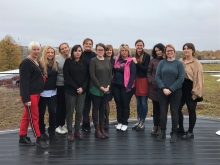Trikala
The prefecture of Trikala is located in the center of Greece ; 336 km away from Athens and 216 km away from Thessaloniki. The population of the prefecture is 138.956 inhabitants. Trikala (the city) is the capital of the prefecture and is located at the fertile plain of Thessaly in central Greece. The population of the city is 57.914 inhabitants, but the real population is about 75.000 inhabitants and the daily average number of people commuting to the city is about 85.000. The City of Trikala is nowadays one of the most important medium sized urban centre of the country and thus concentrates all the important economic, cultural, athletic and other activities of the Prefecture.
Main challenges for the city and its hinterland:
- Upgrading of the urban and peri-urban area by making the proper territorial urban planning adjustments and expansions in order to avoid the problems of illegal construction and the tension of constructing outside the urban zone and by concentrating properly the homogeneous land uses (industry, commerce, residents, etc).
- Betternt promotion of the natural and cultural landmarks in the greater area of the city as well as the need of uniting and connecting them in one central network of functions, of green and of communal spaces.
- The spatial planning should be based on the frame of the corporative relation between town and countryside.
- The local economies and businesses should be better developed and coordinated.
SOME RELATED NETWORKS
CityRegion.Net
VILAWATT
Article
23 Action Planning Networks ready for Phase 2!
Article
“Gender is everywhere”: Introducing the Action Planning Network GenderedLandscape
Article





